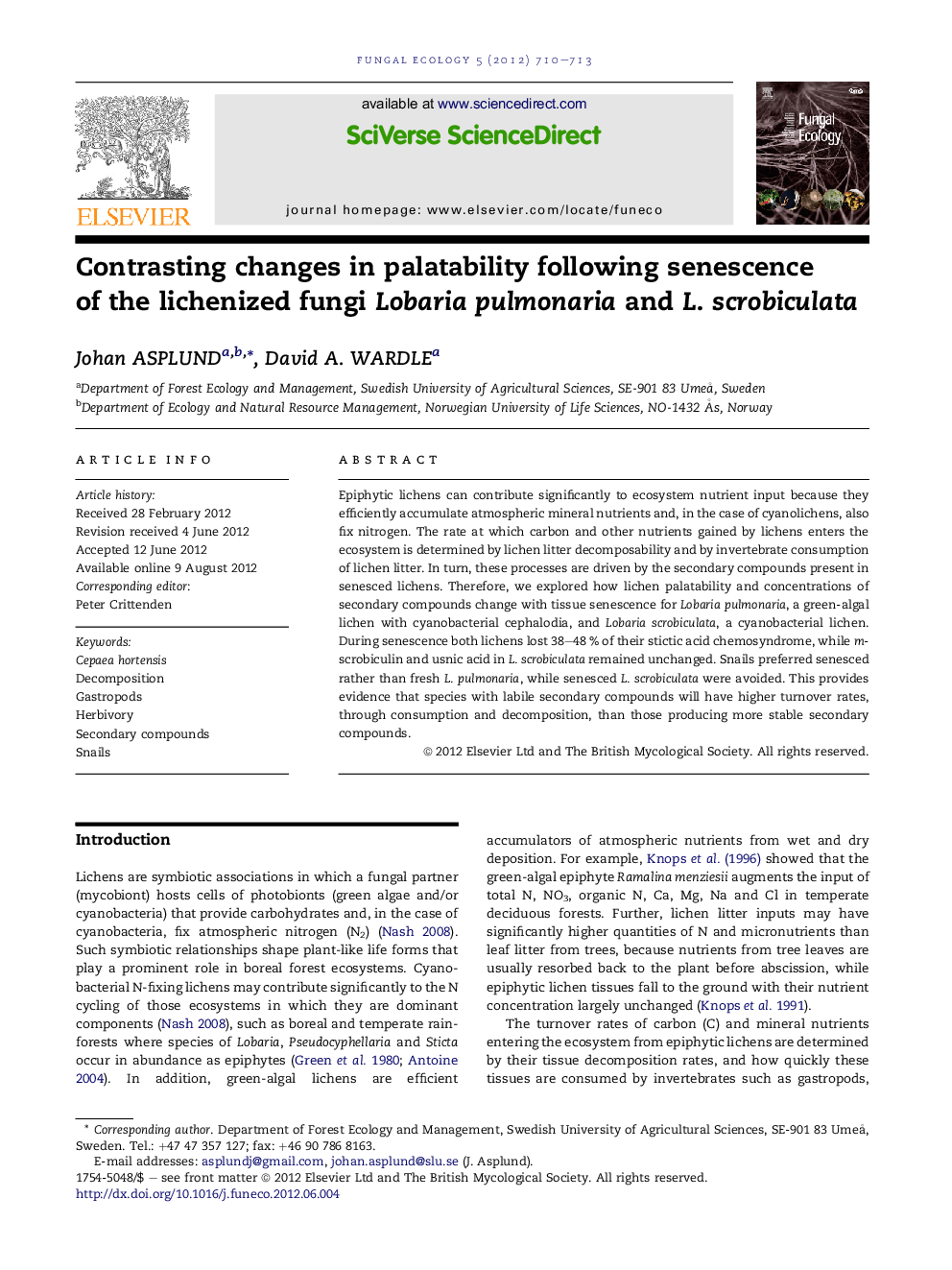| Article ID | Journal | Published Year | Pages | File Type |
|---|---|---|---|---|
| 2053655 | Fungal Ecology | 2012 | 4 Pages |
Epiphytic lichens can contribute significantly to ecosystem nutrient input because they efficiently accumulate atmospheric mineral nutrients and, in the case of cyanolichens, also fix nitrogen. The rate at which carbon and other nutrients gained by lichens enters the ecosystem is determined by lichen litter decomposability and by invertebrate consumption of lichen litter. In turn, these processes are driven by the secondary compounds present in senesced lichens. Therefore, we explored how lichen palatability and concentrations of secondary compounds change with tissue senescence for Lobaria pulmonaria, a green-algal lichen with cyanobacterial cephalodia, and Lobaria scrobiculata, a cyanobacterial lichen. During senescence both lichens lost 38–48 % of their stictic acid chemosyndrome, while m-scrobiculin and usnic acid in L. scrobiculata remained unchanged. Snails preferred senesced rather than fresh L. pulmonaria, while senesced L. scrobiculata were avoided. This provides evidence that species with labile secondary compounds will have higher turnover rates, through consumption and decomposition, than those producing more stable secondary compounds.
► We examine changes in lichen palatability and secondary compounds during senescence. ► We found compound-specific variations in the stability of secondary compounds. ► Palatability changes in contrasting directions in the two studied lichen species.
